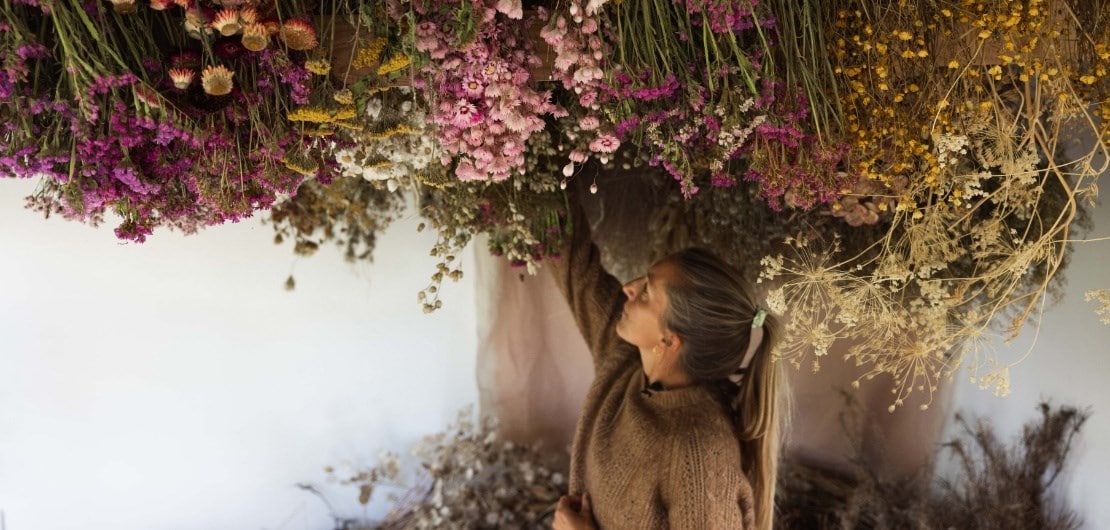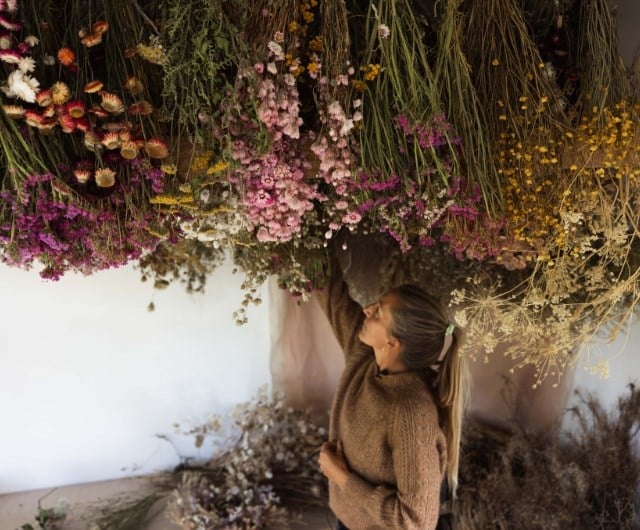
Written by: Bex Partridge
Drying flowers is ever so simple, yet one of the most fascinating things to explore with plants. It feels a little magical to watch a fresh bloom, slowly fade to a soft, ethereal version of its former self. And to know that those blooms will go on to bring untold amounts of joy to me and others, lasting months and months inside. What I love about drying flowers is that it gives us to the opportunity to bring nature into the home during those darker months of Autumn and Winter, when the world outside has put itself to bed and is replenishing itself, we can still enough flowers.
Drying flowers couldn’t really be simpler and I’ve shared below some top tips to ensure you get the best results. Remember, anything dries and part of the fun is experimenting:
Harvesting flowers to dry
As a general rule you should be harvesting or cutting your flowers to dry when they are at their peak. This differs from when cutting fresh flowers, when most are harvested at the cracked bud stage (where they have swelling flower buds, with one or two just beginning to open). Choose a dry day to harvest your flowers, and ideally one that isn’t too hot. During the harvesting process, remove the majority of the leaves from the stems as these can be unsightly when dried and can also go mouldy.


How to dry
I dry the majority of my flowers by hanging them upside down: it is the simplest and most effective method. I tend to tie bunches of five to ten stems (depending upon the size and scale of the flowers) together using a simple looped knot which can be tightened easily. The string is then tied together at the end and looped over my branch or chicken wire using a very simple S-shaped hook, created using sturdy garden wire. This makes for easy moving once the flowers have dried. To hang flowers out to dry successfully, there are just a few simple conditions to consider.
The tips I am sharing here also apply to how you store your flowers once they are dried.
1 Sunlight: while you don’t necessarily need to dry your flowers in the dark (I don’t, my studio has windows on all sides), it is important that they don’t dry in direct sunlight. Direct sunlight can cause the flowers to fade and turn brittle, which will make them tricky to work with.
2 Moisture: flowers dry best in a space that is free from moisture and damp. If you remember that we are trying to extract the moisture from the flowers, it makes sense that we will need a nice dry space in which to do this. Therefore it’s best to avoid kitchens, where the steam from the stove could be problematic, as well as bathrooms. Outside spaces such as sheds can be fine if we have a nice hot summer, but the flowers will need to be monitored regularly in case damp starts to set in.
3 Temperature: when drying flowers we are looking for an ambient temperature, not too hot and not too cold. We want the flowers to dry out at a steady pace, over time. If the space is too hot and they dry too quickly they can become brittle; and equally, if it’s too cold they can take too long to dry out and that results in mould and damp setting in.




